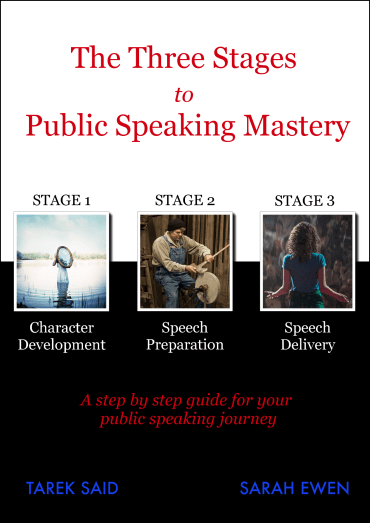THE SPEECH THAT MADE OBAMA PRESIDENT
One speech could be all it takes! One speech could be all that is separating you from stardom in your career, business or field. I’m not exaggerating! Just as a movie can take an actor from zero to hero so too can a speech. For Barack Obama it was a speech that he delivered in 2004 that propelled him into the limelight. Before this speech he was an unknown senator. After this speech, people started thinking of him as the next president of the United States.
The stage is a place where many stars are born and you have the potential. Luckily, you don’t have to be an actor to be a star, you can be a speaker! You simply need to put energy and effort into preparing your next speech and your life could be transformed.
I have researched and analysed Obama’s speech that made him a president and here are six key areas that you can learn from.
1. STORIES
Obama not only filled his speech with stories, he made the core of his speech a story. Instead of making the core of his speech a collection of dry ideas and supporting these ideas with stories, he made the core of his speech a story and explained how it applied to the ideas he talked about. This technique gave him an incredible ability to connect with the audience. It was like watching the plot unfold in a movie, not listening to a boring political speech.
How can you apply this to your speeches?
You may not have a personal story as powerful as Obama’s, but that doesn’t mean you can’t apply the same technique in your speeches. Anything can be turned into a story. A simple way of doing so is to make yourself a character in the story. For example, let us say you want to talk about the latest web development tips and tricks. Instead of listing them out in bullet point fashion, you can talk about how they play an important role in your job, or perhaps how you resisted them at first before you realised how powerful they are. In my opinion there is a personal story behind everything. Find this story and share it with the audience.
2. RHETORICAL DEVICES
Obama filled his speech with rhetorical devices. Rhetorical devices help make your speech easier to listen to and understand. Here are examples of the types of rhetorical devices Obama used in his speech:
Anaphora: “Repeating the first word or phrase in one sentence at the beginning of successive sentences.” This seems to be Obama’s favourite rhetorical device as he used this many times in his speech:
- We have real enemies in the world. They must be found, they must be pursued, and they must be defeated.
- If there’s a child on the southside of Chicago who can’t read, that matters to me, even if it’s not my child. If there’s a senior citizen somewhere who can’t pay for their prescription and having to choose between medicine and the rent, that makes my life poorer, even if it’s not my grandparent. If there’s an Arab-American family being rounded up without benefit of an attorney or due process, that threatens my civil liberties.
- I believe that we can give our middle class relief and provide working families with a road to opportunity. I believe we can provide jobs for the jobless, homes to the homeless, and reclaim young people in cities across America from violence and despair. I believe that we have a righteous wind at our backs, and that as we stand on the crossroads of history, we can make the right choices and meet the challenges that face us.
Antithesis: The use of contrasting/opposing ideas in adjacent sentences or phrases. Opposing ideas are shown in different colours.
- I say to them tonight, there’s not a liberal America and a conservative America; there’s the United States of America.
- There’s not a black America and white America and Latino America and Asian America; there’s the United States of America.
Polysyndeton: Adding a series of conjunctions (and, or, yet, but, so) which are not normally found in successive words.
- There’s not a black America and white America and Latino America and Asian America; there’s the United States of America.
Enumeratio: Dividing a subject in constituent parts or details.
- I thought of the 900 men and women, sons and daughters, husbands and wives, friends and neighbours who won’t be returning to their own hometowns.
How can you include these devices in your speeches?
You may say that these rhetorical devices apply only to grand political speeches and may sound silly if you use them. However, this does not have to be the case. It all comes down to the way you use them. For example, “anaphora” is one of the easiest and most used rhetorical devices in speeches. However, it is important to make sure you don’t use rhetorical devices just for the sake of it as this can distract from your key message.
The purpose of rhetorical devices is to clarify and emphasise a point you’re making and it is important they are used for this purpose only.
3. PREPARATION
According to Obama, when he was given the task of delivering the 2004 keynote speech, he watched and read many previous keynote addresses. Then he spent over two weeks writing his speech and a further two weeks editing it. He invested hours and hours often working on it beyond midnight and his final draft was then sent to the Democratic speechwriting team for further editing. After the speech writing was completed, he was given three one-hour sessions to practice it.
How can you apply this to your speeches?
The importance of preparation cannot be emphasised enough. Unfortunately though many people place little importance on preparation. They write a speech quickly and deliver it without practicing at all. The thing to remember is that one speech can take you to stardom in your career, business or field and is therefore worth investing in. When you have the opportunity to deliver a speech why not pour all your energy into preparing it? Think about it, a movie usually lasts around 100 minutes, yet it takes months if not years of preparation. Similarly, a speech that lasts 20 minutes (17 minutes in Obama’s case) needs weeks of preparation. As Mark Twain said:
“It usually takes more than three weeks to prepare a good impromptu speech.”
4. IMAGERY
Obama used the power of imagery to perfection. For example, instead of saying my father was poor he said:
“My father was a foreign student, born and raised in a small village in Kenya. He grew up herding goats, went to school in a tin-roof shack.”
The word poor is very subjective and hence doesn’t have the same power as the images Obama drew. In another example, instead of saying that America was the land of hope, he drew images as follows: “
“It’s the hope of slaves sitting around a fire singing freedom songs; the hope of immigrants setting out for distant shores; the hope of a young naval lieutenant bravely patrolling the Mekong Delta; the hope of a mill worker’s son who dares to defy the odds;
And my favourite line in the entire speech when he referred to himself:
“the hope of a skinny kid with a funny name who believes that America has a place for him, too.”
If you want to see the power of this sentence watch the speech 15:35 minutes in and listen to the applause it generated.
How can you apply this to your speeches?
Images are way more powerful than abstract words. Next time you want to describe something think whether you can create an image. Instead of saying that your employees are hard workers, say how they toil for long hours to meet deadlines. Instead of saying in a wedding speech the groom was the most supportive person you have ever met, share the story of the time when he rescued you from a horrendous situation. Instead of saying that the earth’s temperature has risen over 2 degrees over the last century, say how the ice is melting and the sea is overtaking the land.
5. SINCERITY
Obama’s attitude can be summed up in one sentence: “I can feel you”. He told personal stories, used rhetorical devices, prepared, used imagery and was deeply passionate not because he wanted to audience to think: “hey, this guy is cool”, but because he wanted them to know that he feels their pain and shares their hopes. Not at any moment in the speech can you feel Obama being arrogant, fake or rehearsed. You can sense that he felt and meant every word he said.
How can you apply this to your speeches?
When delivering a speech, make sure your intentions and heart match up with what you are saying. For example, if you say a joke, make sure that you say it because you want people to laugh and not because you want to come across funny. When you use a rhetorical device make sure you use it to make your message clearer, not because you want the audience to think you are articulate. George Orwell once said:
“The great enemy of clear language is insincerity. When there is a gap between one’s real and one’s declared aims, one turns as it were instinctively to long words and exhausted idioms, like cuttlefish squirting out ink.”
6. PASSION
Even non english speakers can feel Obama’s passion in this speech. His body language, his voice tone, his pauses, his hand gestures. Everything he did or said was clearly motivated by deep passion about his message. He even extended the sound of certain words to add more passion to them. For example he did this with the words highlighted in red:
“That shone as a beacon of freedom and opportunity to so many who have come before.”
“ I am my brother’s keeper, I am my sister’s keeper that makes this country work”
“We stand at the crossroads of history..”
Obama also used his hands in a way that complemented his words. Sometimes he pointed with his finger, sometimes he put his index finger and the thumb together while pointing downwards, sometimes he opened his palms and pointed them upwards. These gestures were natural and spontaneous adding to his passionate delivery.
How can you apply this to your speeches?
When writing a speech, identify what the key message is that you are passionate about. What is the one thing that you really want the audience to know. It might be difficult initially and sometimes it may even take days to identify, but once you do, you’ll be surprised how the speech almost writes itself. You will naturally use engaging words, apply open body language and use powerful hand gestures.
The reality is we can all learn from Obama’s speech and remember your next speech may just be the speech that propels you into stardom.

